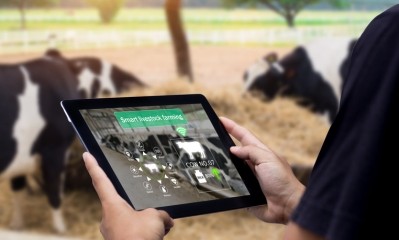Dispatches from GFFC
Technology doesn’t baffle farmers, say experts

They stress that tech firms should include the on-the-ground experts as they develop solutions, say experts.
“My company actively tries to market this technology, so my view is different to the lazy media narrative that farmers are slow adopters of technology and they are very risk-averse,” said Dave Hunt, co-founder of Irish agtech business, Cainthus.
Hunt has the benefit of experience to inform his point of view. Growing up in a small village as part of a family that owned Ireland’s biggest grain supplier, he has been steeped in agriculture from an early age. But as a teenager, his dreams were more of Silicon Valley than an emerald glen packed with animals.
Cainthus has developed facial recognition technology for other livestock. Its platform uses a suite of cameras installed in each barn, and sensors on the animals, to provide visual information can be translated into actionable data.
The results of this data serve to improve barn feed efficiency and water intake. The technology also promises to help enhance animal health and wellbeing, increase milk production in dairy cows and improve farm profitability.
Speaking to FeedNavigator at an industry event organized by the GFFC in Bangkok, he said: “I don’t think it’s true that it is difficult to persuade farmers to adopt new systems.
“In my experience, if a technology is going to work, and the price is right, the adoption is actually extremely quick and seamless. One of my company’s biggest problems at the moment is keeping up with the level of demand for what we are doing.”
He cites the example of Silicon Valley agtech entrepreneurs that were forced to fold as they lamented that farmers were not yet ready for their products: “When they didn’t have proper market fit and the right price, instead of blaming themselves, they blamed the farmers, and that was a good story in the media.”
Research in collaboration with farmers
Daniel Berckmans concurs. The professor of animal systems at Leuven Catholic University in Belgium, has spent over 35 years working with farmers in the pursuit of developing hi-tech systems to make their farms more efficient.
“We have developed a lot of these things through research in collaboration with the farmers themselves,” he said.
To illustrate this, he described a project his department carried using sensors and technology to monitor the behavior of livestock.
Over four years, the farmers played an active part in this research, providing viewpoints that were pivotal in the technology’s development.
“They really wanted to be in front of it, right from the start, so we would call them in to talk about what they had found. It was important to get their opinions,” said Dr Berckmans.
“But we should never forget, when farmers are accused of being slow tech adopters, that they are operating a very risky business. If you cannot prove to them how your technology can create value, they will not use it. If you can, they most likely will.”
Blockchain and data management
Taking a different viewpoint, Marieke de Ruyter de Wildt, an expert in blockchain applications in agriculture and feed, said farmers rarely tend to find themselves at the bleeding edge of disruptive, innovative technologies, meaning it is a challenge to persuade them to invest—for now.
Professing to be ‘on the frontier of blockchain technology,’ de Wildt’s company, Amsterdam-based The Fork, offers courses in distributed ledger services and helps agrifood companies to implement their own blockchains. She says, by its immutable nature, this form of data storage can drastically boost efficiency and transparency in any food supply chain.
“There’s a huge distrust to anything that’s non-physical, that’s digital and not touchable,” she explained. “But because of the permanent character of blockchain records, over time it will become ‘mentally tangible’ for those who use it.
“And I think any concerns over data management will be put to bed because of blockchain—something which will deliver much more trust from the agrifood industry in digital systems.”
It is up to governments, research institutes and commercial entities help the farming world to trust the burgeoning digital world, she added.
According to Dr Berckmans, farmers often suffer from providing the final link of the development chain for new technology when this is being carried out by dedicated tech firms, in contrast with how his own academic projects operate.
Earlier links, he said, can be occupied by those who believe the farmer’s job should be out in the fields and barns, and not in software suites with the cool kids.
“A lot of people look down on the next person in the development process, with the farmer right at the end of it,” he said.
“What I’ve learnt is there is a lot of people involved in development, but often there is not a single farmer. But they know the process best—the real work that’s done. So we should not talk down to the farmer; instead we should listen to him.”
Hunt, who has spent much of his life speaking to farmers on their level, adds it is a “really bad idea” to tell a farmer what to do with his business, and knowing this should be central to any technology pitch.
“Presenting yourself by saying that the farmer is already doing an amazing job and you’re going to give him a tool that’s going to do an even more amazing job, that works really well,” the Cainthus chief executive remarked.
“But there is a lot of people who don’t come from the agricultural industry who try and sell technology to farmers. These guys have a tendency to tell them him to do their jobs. Just don’t do that!”














